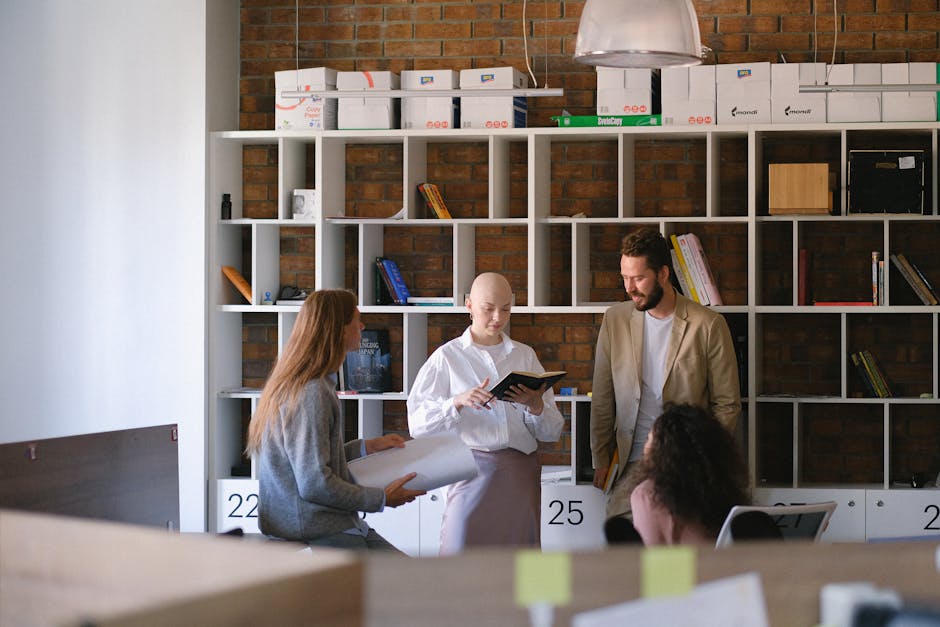Revolutionizing Office Layout: Boosting Productivity and Employee Experience
“This article explores cutting-edge approaches to office layout design, focusing on how thoughtful space planning can significantly improve productivity and employee satisfaction. We delve into balancing collaborative areas with focused work zones, incorporating employee feedback, and adapting to the evolving needs of a hybrid workforce. ”

Revolutionizing Office Layout: Boosting Productivity and Employee Experience
In today's rapidly evolving work environment, the importance of an effective office layout cannot be overstated. As companies navigate the complexities of hybrid work models and changing employee expectations, the design of physical workspaces has become a critical factor in driving productivity, fostering collaboration, and enhancing overall employee experience.

The Shifting Paradigm of Office Space
The traditional concept of the office as a place where employees simply come to work is outdated. Modern workplaces are now expected to serve multiple functions, catering to the diverse needs of a dynamic workforce. The best office layout is one that not only facilitates productivity but also promotes creativity, collaboration, and employee well-being.
Balancing Collaboration and Focus
One of the key challenges in designing an effective office layout is striking the right balance between collaborative spaces and areas for focused work. According to Gensler's U.S. Workplace Survey, only one in four knowledge workers are in optimal workplace environments. The rest struggle with either too many distractions in open layouts or isolation in confined spaces.
To address this, consider implementing a mix of:
- Open collaborative areas for team discussions and brainstorming sessions
- Quiet zones for concentrated individual work
- Flexible spaces that can be adapted for different purposes
Employee-Centric Design Approach
Involving employees in the office layout design process is crucial for creating a space that truly meets their needs. Here are some strategies to ensure your office layout aligns with employee preferences:
- Conduct surveys and focus groups: Gather feedback on what employees value most in their workspace.
- Observe work patterns: Study how different teams interact and use the current space to inform design decisions.
- Implement pilot programs: Test new layout concepts on a small scale before rolling out company-wide changes.

Designing for Different Work Styles
Recognizing that employees have diverse work styles is essential for creating an inclusive office layout. Deloitte Consulting's worker archetypes framework can be a useful tool in this regard:
- Independents: Require quiet spaces for focused work
- Travelers: Need flexible touchdown areas when in the office
- Residents: Benefit from dedicated workstations and easy access to team members
- Teamers: Thrive in collaborative environments with ample meeting spaces
By catering to these different archetypes, you can create a more versatile and accommodating office layout that supports various work preferences and tasks.
Optimizing for Health and Well-being
The pandemic has heightened awareness of the importance of physical and mental health in the workplace. A well-designed office layout should prioritize employee well-being through:
- Ergonomic furniture and adjustable workstations
- Ample natural light and good air quality
- Dedicated spaces for relaxation and mental breaks
- Green areas or biophilic design elements
Infusing hospitality into workplace experience management can further enhance the overall atmosphere and make employees feel valued and comfortable in their work environment.
Leveraging Technology for Smart Space Management
Incorporating technology into your office layout can significantly improve space utilization and employee experience. Consider implementing:
- Desk booking systems for flexible seating arrangements
- Smart meeting room scheduling tools
- Occupancy sensors to track space usage patterns
These technologies can help optimize your office layout over time, ensuring that it remains responsive to changing needs and work patterns.

The Future of Office Layout: Flexibility and Adaptability
As we look to the future, it's clear that the most successful office layouts will be those that can easily adapt to changing work trends and employee needs. Hybrid work policies are becoming increasingly common, requiring offices to support both in-person and remote collaboration seamlessly.
Consider implementing:
- Modular furniture systems that can be reconfigured easily
- Multi-purpose spaces that can serve different functions throughout the day
- Technology infrastructure that supports hybrid meetings and virtual collaboration
By embracing flexibility in your office layout, you can create a workspace that evolves with your organization and continues to meet the needs of your workforce.
Conclusion: The Power of Thoughtful Office Design
A well-designed office layout is more than just an aesthetic choice—it's a strategic business decision that can significantly impact productivity, employee satisfaction, and overall organizational success. By prioritizing employee needs, balancing different work styles, and embracing flexibility, companies can create workspaces that not only attract top talent but also inspire their best work.
As you consider revamping your office layout, remember that the process should be iterative and data-driven. Regularly gather feedback from employees, analyze space usage patterns, and be prepared to make adjustments as needed. With a thoughtful approach to office layout design, you can create a workplace that truly supports and enhances the employee experience in the modern era of work.